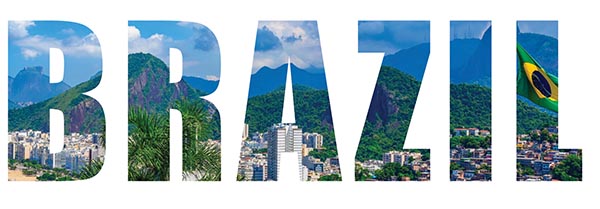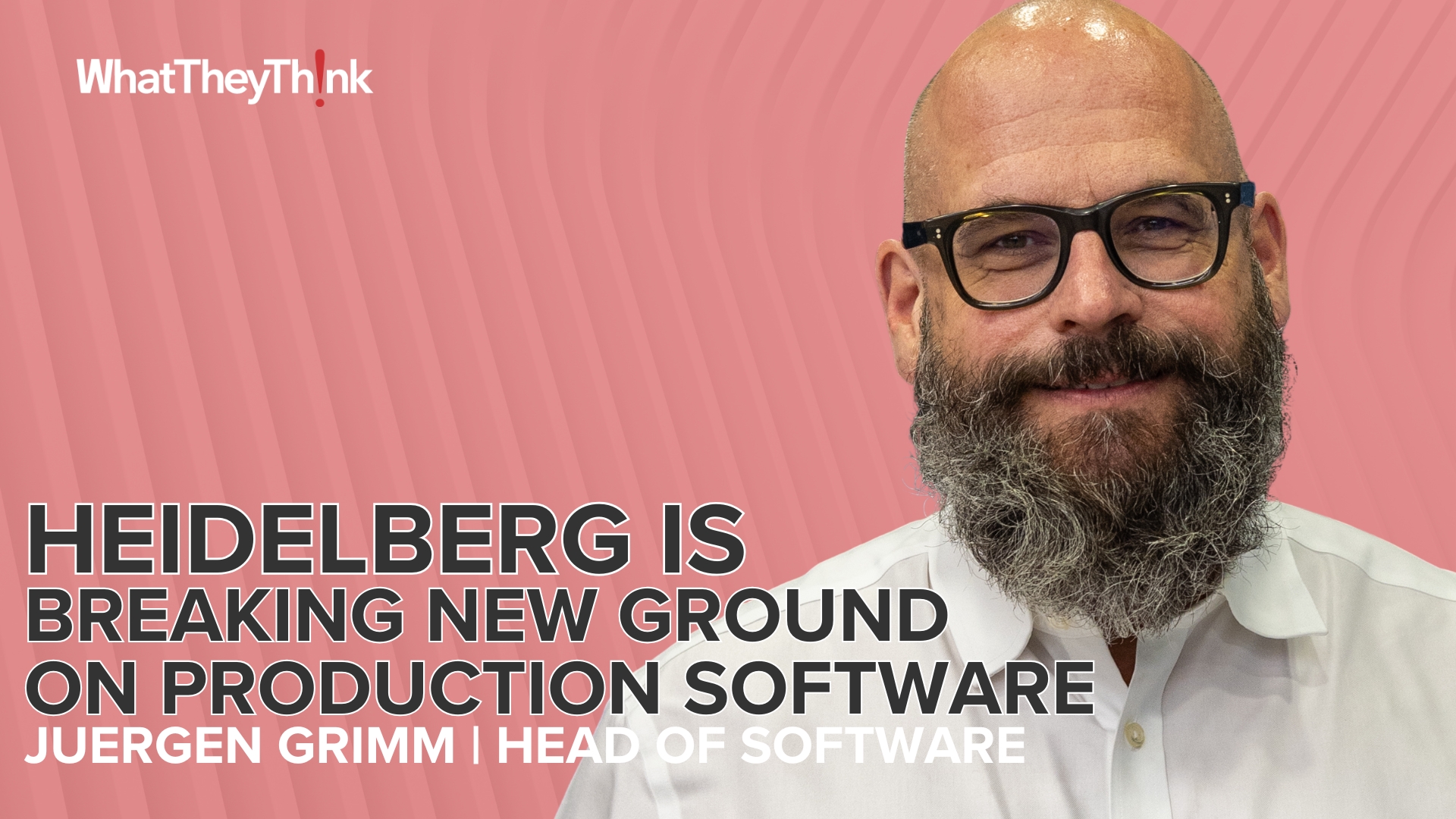
By Hamilton Terni Costa
(This article originally ran in the June 3 edition of the drupa daily.)
Over 2,000 Brazilian printing industry owners and professionals will be attending drupa, eager to witness technological advancements, access updated information, and observe emerging trends. This presents an opportune moment to reassess and solidify new directions for an industry grappling with cost pressures, margin erosion, and a lack of attractiveness to young workers. Yet, amidst these challenges lie opportunities awaiting exploration.
Emerging from the challenging pandemic period, during which approximately 18% of printers in the country either shuttered their businesses or underwent consolidation, Brazilian printers are now embarking on a new era where innovation and sustainability stand as crucial pillars for success. Dealing with escalated costs due to supply chain disruptions and paper shortages, which were global phenomena, the printing industry in Brazil is pivoting towards solutions that enhance productivity. Drupa promises to showcase numerous innovations tailored to address these pressing challenges.
Brazil, a country of 207 million people, has a large economy and dynamic internal market, and boasts the largest printing industry in South America, rivaled only by Mexico in Latin America. According to statistics from the Brazilian Printing Industry Association (Abigraf), the country currently hosts 15,000 printing companies, down from 19,000 in 2019, yet boasting a turnover close to US$14 billion in 2023, nearly on par with pre-pandemic levels. Despite a 25% drop in physical production in 2020, notable exceptions include paper and plastic packaging production, which saw increases of 1% and 6.5%, respectively, during that period.
Flexible and corrugated packaging are not included in those figures. In 2023, the turnover for flexible packaging amounted to US$6.6 billion, as reported by Abief, the Brazilian Association of Flexible Plastic Packaging. Corrugated packaging and lamination contributed approximately US$5.5 billion in turnover, according to estimates from Empapel, the Paper Packaging Brazilian Association. Thus, when considering all three sectors, the combined annual turnover reaches US$26 billion.
The profile of the printing industry in Brazil closely resembles that of other regions. In terms of employment, 97.1% of companies are classified as small, employing between 1 to 49 individuals. Medium-sized enterprises, with up to 250 employees, represent 2.5% of the industry, while large companies with over 250 employees comprise just 0.4% of the total. National statistics indicate that as of the end of 2023, there were approximately 182,000 direct employees in the printing and conversion industry.
Despite the predominance of small-scale operations, there exists a cohort of printing companies boasting cutting-edge technology, delivering high-quality outputs, and innovating with their business models. This includes both domestic players and international companies, particularly active in the packaging market.
Investments in machinery within the industry are on the rise, reaching US$970 million in 2023. This marks a notable 10% increase from 2022 and a significant 43% surge compared to 2021. Clearly, many printers are prioritizing the modernization of their facilities, seeking automation, more efficient presses, and the optimization of their workflows.
Yet, is there another approach? In an era where clients demand rapid responses, sustainability becomes an increasingly vital aspect of the business landscape, and AI permeates all facets of printing technologies, from production processes to sales and marketing strategies, forging ahead is indeed the only viable option.
Hence, the in-person drupa event returns once more to guide printers along this transformative journey!
Hamilton Terni Costa, MSc, MBA, is a distinguished international consultant, analyst, entrepreneur, professor, and author with over 45 years of extensive experience in the printing. Originally from Brazil, Hamilton has held pivotal leadership roles in national and international printing companies, both in Brazil and abroad, including executive positions in industry associations.
Brasilianische Druckindustrie: Innovation und Nachhaltigkeit sind ausschlaggebend für Wachstum
Mehr als 2.000 brasilianische Druckereibesitzer und Fachleute werden an der drupa teilnehmen, um sich über technologische Fortschritte zu informieren, aktuelle Informationen zu erhalten und neue Trends zu beobachten. Dies ist ein günstiger Zeitpunkt, um neue Wege für eine Branche zu finden, die mit Kostendruck, Margenverfall und mangelnder Attraktivität für junge Arbeitnehmer zu kämpfen hat. Doch inmitten dieser Herausforderungen liegen auch Chancen, die es zu erkunden gilt.
Nach der schwierigen Zeit der Pandemie, in der etwa 18 % der Druckereien im Land entweder geschlossen oder konsolidiert wurden, beginnt für die brasilianischen Druckereien nun eine neue Ära, in der Innovation und Nachhaltigkeit die entscheidenden Säulen des Erfolgs sind. Die brasilianische Druckindustrie, die mit steigenden Kosten aufgrund von Unterbrechungen in der Lieferkette und Papierknappheit zu kämpfen hat, die weltweit zu beobachten sind, konzentriert sich auf Lösungen, die die Produktivität steigern. Die drupa verspricht, zahlreiche Innovationen zu präsentieren, die auf diese drängenden Herausforderungen zugeschnitten sind.
Brasilien, ein Land mit 207 Millionen Einwohnern, hat eine große Wirtschaft und einen dynamischen Binnenmarkt und verfügt über die größte Druckindustrie in Südamerika, die in Lateinamerika nur von Mexiko übertroffen wird. Laut Statistiken des brasilianischen Verbandes der Druckindustrie (Abigraf) gibt es in Brasilien derzeit 15.000 Druckunternehmen, ein Rückgang von 19.000 im Jahr 2019, aber ein Umsatz von fast 14 Milliarden US-Dollar im Jahr 2023, was fast dem Niveau vor der Pandemie entspricht. Trotz eines Rückgangs der physischen Produktion um 25 % im Jahr 2020 bilden Papier- und Kunststoffverpackungen mit einem Anstieg von 1 % bzw. 6,5 % in diesem Zeitraum eine bemerkenswerte Ausnahme.
Flexible Verpackungen und Verpackungen aus Wellpappe sind in diesen Zahlen nicht enthalten. Im Jahr 2023 belief sich der Umsatz für flexible Verpackungen auf 6,6 Milliarden US-Dollar, wie Abief, der brasilianische Verband für flexible Kunststoffverpackungen, berichtet. Wellpappenverpackungen und Kaschierungen trugen nach Schätzungen von Empapel, dem brasilianischen Verband für Papierverpackungen, etwa 5,5 Milliarden US-Dollar zum Umsatz bei. Betrachtet man also alle drei Sektoren, so erreicht der Jahresumsatz insgesamt 26 Milliarden US-Dollar.
Das Profil der Druckindustrie in Brasilien ähnelt stark dem anderer Regionen. Was die Beschäftigung betrifft, so sind 97,1 % der Unternehmen als klein eingestuft und beschäftigen zwischen 1 und 49 Personen. Mittelgroße Unternehmen mit bis zu 250 Beschäftigten machen 2,5 % der Branche aus, während große Unternehmen mit mehr als 250 Beschäftigten nur 0,4 % der Gesamtbeschäftigung ausmachen. Nationale Statistiken zeigen, dass Ende 2023 etwa 182.000 direkte Beschäftigte in der Druck- und Verarbeitungsindustrie tätig waren.
Trotz der vorherrschenden kleinen Betriebe gibt es eine Reihe von Druckereien, die mit modernster Technologie arbeiten, qualitativ hochwertige Produkte liefern und mit ihren Geschäftsmodellen innovativ sind. Dazu gehören sowohl einheimische als auch internationale Unternehmen, die insbesondere auf dem Verpackungsmarkt tätig sind.
Die Investitionen in Maschinen innerhalb der Branche steigen und erreichten 2023 970 Millionen US-Dollar. Dies ist ein bemerkenswerter Anstieg um 10 % gegenüber 2022 und ein deutlicher Anstieg um 43 % gegenüber 2021. Es liegt auf der Hand, dass viele Druckereien der Modernisierung ihrer Anlagen Priorität einräumen und sich um Automatisierung, effizientere Druckmaschinen und die Optimierung ihrer Arbeitsabläufe bemühen.
Doch gibt es auch einen anderen Ansatz? In einer Zeit, in der Kunden schnelle Antworten verlangen, Nachhaltigkeit ein immer wichtigerer Aspekt der Geschäftslandschaft wird und KI alle Facetten der Drucktechnologien durchdringt, von Produktionsprozessen bis hin zu Vertriebs- und Marketingstrategien, ist Vorwärtsgehen in der Tat die einzige praktikable Option.
Aus diesem Grund kehrt die drupa wieder zurück, um Druckereien auf dieser transformativen Reise zu begleiten!
Hamilton Terni Costa, MSc, MBA, ist ein angesehener internationaler Berater, Analyst, Unternehmer, Professor und Autor mit über 45 Jahren umfassender Erfahrung in der Druckbranche. Ursprünglich aus Brasilien stammend, hatte Hamilton Terni Costa wichtige Führungspositionen in nationalen und internationalen Druckunternehmen inne, sowohl in Brasilien als auch im Ausland, einschließlich Führungspositionen in Branchenverbänden.














